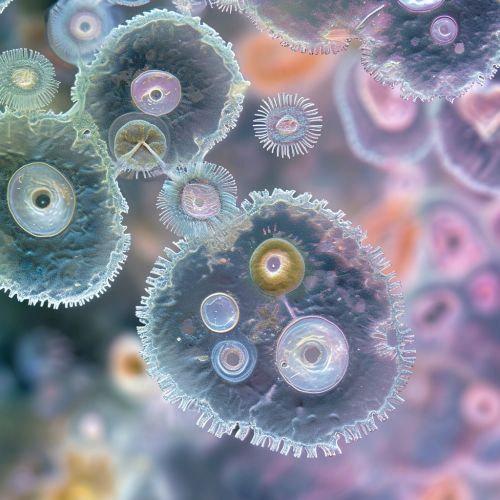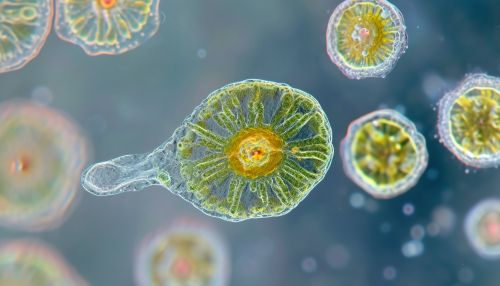Amoebozoa
Classification and Characteristics
Amoebozoa is a major taxonomic group containing about 2,400 described species of amoeboid protists, often possessing blunt, fingerlike, lobose pseudopods and tubular mitochondrial cristae. In most classification schemes, Amoebozoa is ranked as a phylum within either the kingdom Protista or the kingdom Protozoa. In the classification favored by the International Society of Protistologists, it is retained as an unranked "supergroup" within Eukaryota. Molecular genetic analysis supports Amoebozoa as a monophyletic clade.


Amoebozoa are often found in soil, freshwater, and marine environments. They play a key role in soil ecology by contributing to the mineralization of organic matter. Some species are parasitic or pathogenic to humans and other animals.
Morphology and Locomotion
Amoebozoa exhibit great morphological diversity, but they all share the presence of lobose pseudopods, used for locomotion and feeding. The pseudopods are characteristically blunt and finger-like, with a clear distinction between the granular endoplasm and clear ectoplasm. They move by a form of locomotion called amoeboid movement, where the cell extends pseudopods and flows into them, dragging the rest of the cell along.
Life Cycle and Reproduction
Amoebozoa typically reproduce asexually by binary fission, where the cell divides into two identical daughter cells. Some species also have sexual reproduction, involving the fusion of gametes and the formation of a zygote. The zygote may form a protective cyst and undergo meiosis, leading to the production of haploid amoebae.
Taxonomy and Phylogeny
Amoebozoa is divided into several major subgroups: Lobosa, Conosa, Archamoebae, and Mycetozoa. The Lobosa are characterized by their lobose pseudopods and include both tubulose and flattened forms. The Conosa, which includes the subgroups Mycetozoa and Archamoebae, are amoebae with conical pseudopods. The Archamoebae are primitive amoebozoa, lacking mitochondria. The Mycetozoa or slime molds are a unique group of amoebae that aggregate to form multicellular fruiting bodies.
Ecological Role and Significance
Amoebozoa play a significant role in nutrient cycling and soil structure. They consume bacteria, fungi, and other protists, thus controlling their populations and recycling nutrients. Some Amoebozoa can form symbiotic relationships with other organisms, such as algae living inside the amoeba and providing it with food through photosynthesis.
Pathogenic Amoebozoa
Some Amoebozoa are pathogenic and can cause disease in humans and other animals. The most well-known is Entamoeba histolytica, which causes amoebic dysentery and liver abscesses. Another example is Acanthamoeba, which can cause a serious eye infection known as Acanthamoeba keratitis.
